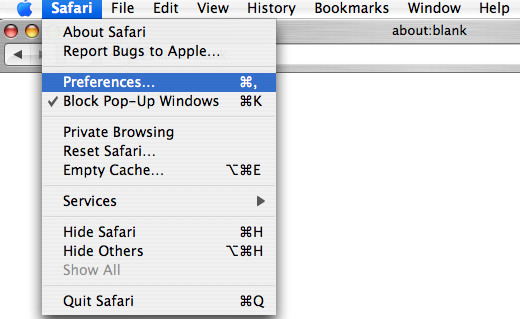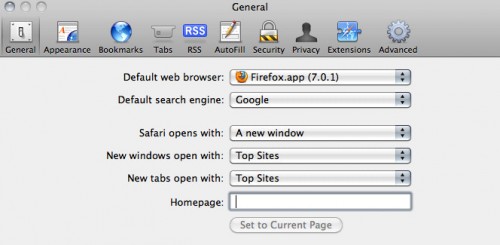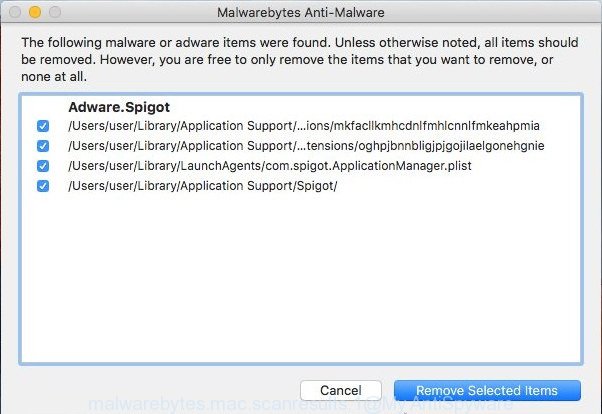Are you seeing unwanted “Install Would Like To Control This Computer” pop-ups every time you use your Apple Mac? This might be a sign that your system has become the victim of the ‘ad-supported’ software (also known as adware).

Adware displays the “Install” Would Like To Control This Computer pop-up to gain control over Mac settings
The full text of the alert is:
"Install" would like to control this computer using accessibility features. Grant access to this application in Security & Privacy preferences, located in System Preferences. (Open System Preferences) (Deny)
Why is adware considered to be a security threat? Ad-supported software is considered a potentially security threat because it often installed on Apple Mac without the knowledge of the user. The adware usually just presents unwanted advertisements, but sometimes adware can be used to obtain your data.
When ad supported software hijacks your MAC system, it might carry out various harmful tasks. It can analyze the location and which Net sites you visit, and then present advertisements to the types of content, goods or services featured there. Ad-supported software makers can collect and sell your surfing information and behavior to third parties.
We advise you remove adware responsible for the “Install” Would Like To Control This Computer alerts as soon as possible. This will also prevent the ad-supported software from tracking your online activities. A full “Install Would Like To Control This Computer” alerts removal can be easily carried out using manual or automatic way listed below.
Remove “Install Would Like To Control This Computer” pop-up alert
To remove “Install” Would Like To Control This Computer alerts, ad supported software and other unwanted applications you can try to do so manually. Unfortunately some of the ad-supported software won’t show up in your applications list, but some adware may. In this case, you may be able to remove it via the uninstall function of your MAC. You can do this by completing the steps below.
To remove “Install” Would Like To Control This Computer pop-ups, use the following steps:
- Remove Adware and PUPs through the Finder
- Reset Chrome
- Reset Firefox
- Reset Safari
- Remove “Install Would Like To Control This Computer” alerts with free tools
- How to stay safe online
Manual “Install Would Like To Control This Computer” fake alerts removal
These steps to remove “Install” Would Like To Control This Computer popup alerts without any apps are presented below. Be sure to carry out the step-by-step instructions completely to fully remove this adware that causes multiple misleading “Install Would Like To Control This Computer” alerts and pop ups.
Remove Adware and PUPs through the Finder
The process of ad supported software removal is generally the same across all versions of Mac operating system. To start with, it is necessary to check the list of installed programs on your Apple Mac and delete all unused, unknown and suspicious programs.
Open Finder and click “Applications” like below.

You will see a list of applications installed on your MAC system. We recommend to pay maximum attention to the application you installed last. Most probably, it is the ad-supported software that causes browsers to open misleading “Install Would Like To Control This Computer” pop-up scam. If you’re in doubt, you can always check the program by doing a search for her name in Google, Yahoo or Bing. When the program which you need to remove is found, simply right click on its name, and choose “Move to Trash”.
Don’t forget, choose Finder, then “Empty Trash”.
Reset Chrome
Reset Chrome settings will help you to completely reset your web-browser. The result of activating this function will bring Chrome settings back to its original settings. This can remove “Install” Would Like To Control This Computer pop-up and disable adware plugins. Essential information such as bookmarks, browsing history, passwords, cookies, auto-fill data and personal dictionaries will not be removed.

- First launch the Chrome and click Menu button (small button in the form of three dots).
- It will show the Chrome main menu. Choose More Tools, then click Extensions.
- You’ll see the list of installed add-ons. If the list has the extension labeled with “Installed by enterprise policy” or “Installed by your administrator”, then complete the following instructions: Remove Chrome extensions installed by enterprise policy.
- Now open the Chrome menu once again, click the “Settings” menu.
- You will see the Chrome’s settings page. Scroll down and click “Advanced” link.
- Scroll down again and click the “Reset” button.
- The Chrome will open the reset profile settings page as shown on the screen above.
- Next press the “Reset” button.
- Once this task is finished, your browser’s search engine by default, startpage and new tab page will be restored to their original defaults.
- To learn more, read the blog post How to reset Chrome settings to default.
Reset Firefox
If your Mozilla Firefox web-browser is redirected to unwanted web-sites without your permission or an unknown search engine shows results for your search, then it may be time to perform the web-browser reset. It will keep your personal information like browsing history, bookmarks, passwords and web form auto-fill data.
First, run the Mozilla Firefox. Next, press the button in the form of three horizontal stripes (![]() ). It will open the drop-down menu. Next, press the Help button (
). It will open the drop-down menu. Next, press the Help button (![]() ).
).

In the Help menu click the “Troubleshooting Information”. In the upper-right corner of the “Troubleshooting Information” page click on “Refresh Firefox” button as shown in the following example.

Confirm your action, click the “Refresh Firefox”.
Reset Safari
By resetting Safari web browser you revert back your browser settings to its default state. This is good initial when troubleshooting problems that might have been caused by adware that displays the “Install” Would Like To Control This Computer pop-up warnings on your MAC.
Run Safari internet browser. Next, select Preferences from the Safari menu.

First, click the “Security” icon. Here, choose “Block pop-up windows”. It will stop some types of pop ups.
Now, click the “Extensions” icon. Look for questionable addons on left panel, choose it, then click the “Uninstall” button. Most important to delete all dubious plugins from Safari.
Once complete, check your start page and search engine settings. Click “General” icon. Make sure that the “Homepage” field contains the website you want or is empty.

Make sure that the “Search engine” setting shows your preferred search provider. In some versions of Safari, this setting is in the “Search” tab.
Remove “Install Would Like To Control This Computer” alerts with free tools
If you are unsure how to get rid of “Install” Would Like To Control This Computer pop-up warnings easily, consider using automatic ad-supported software removal software that listed below. It will identify the adware that causes the “Install” Would Like To Control This Computer alerts and delete it from your MAC for free.
How to get rid of “Install” Would Like To Control This Computer pop-up with MalwareBytes Anti-Malware
If you’re still having problems with the “Install Would Like To Control This Computer” pop-up warnings removal or just wish to check your computer occasionally for adware and other malicious software, then download MalwareBytes AntiMalware. It’s free for home use, and identifies and removes various undesired programs that attacks your machine or degrades computer performance. MalwareBytes can remove browser hijacker, adware, PUPs as well as malicious software, including ransomware and trojans.

- MalwareBytes can be downloaded from the following link.
Malwarebytes Anti-malware (Mac)
20943 downloads
Author: Malwarebytes
Category: Security tools
Update: September 10, 2020
- When the download is finished, close all apps and windows on your MAC OS. Open a file location. Run the downloaded file and follow the prompts.
- Press the “Scan” button . MalwareBytes Free program will scan through the whole computer for the ad-supported software. A system scan can take anywhere from 5 to 30 minutes, depending on your MAC OS. When a threat is found, the number of the security threats will change accordingly. Wait until the the scanning is finished.
- After the system scan is finished, you’ll be opened the list of all found items on your computer. In order to remove all threats, simply press “Remove Selected Items”.
How to stay safe online
If you surf the World Wide Web, you cannot avoid malvertising. But you can protect your web browser against it. Download and run an ad blocking program. AdGuard is an ad blocker that can filter out a lot of of the malicious advertising, stoping dynamic scripts from loading harmful content.

Click the following link to download the latest version of AdGuard for Mac.
3752 downloads
Author: © Adguard
Category: Security tools
Update: January 17, 2018
Once the download is complete, start the downloaded file. You will see the “Setup Wizard” screen. Follow the prompts.
Each time, when you launch your MAC system, AdGuard will launch automatically and stop unwanted ads, as well as other malicious or misleading web-sites.
Prevent adware from installing
Most of unwanted “Install” Would Like To Control This Computer pop-ups come from web-browser toolbars, web-browser extensions, and bundled apps. In most cases, these items claim itself as programs that improve your experience on the Web by providing a fast and interactive startpage or a search engine that does not track you. Remember, how to avoid the unwanted applications. Be cautious, start only reputable software which download from reputable sources. NEVER install any unknown and suspicious software.
Finish words
Now your Mac should be free of the ad supported software which displays the “Install” Would Like To Control This Computer popup alert on your machine. We suggest that you keep AdGuard (to help you block unwanted popup advertisements and annoying malicious web pages) and MalwareBytes Anti-Malware (MBAM) (to periodically scan your computer for new adwares and other malicious software).
If you are still having problems while trying to remove the “Install Would Like To Control This Computer” alerts from your MAC, then ask for help here here.

















